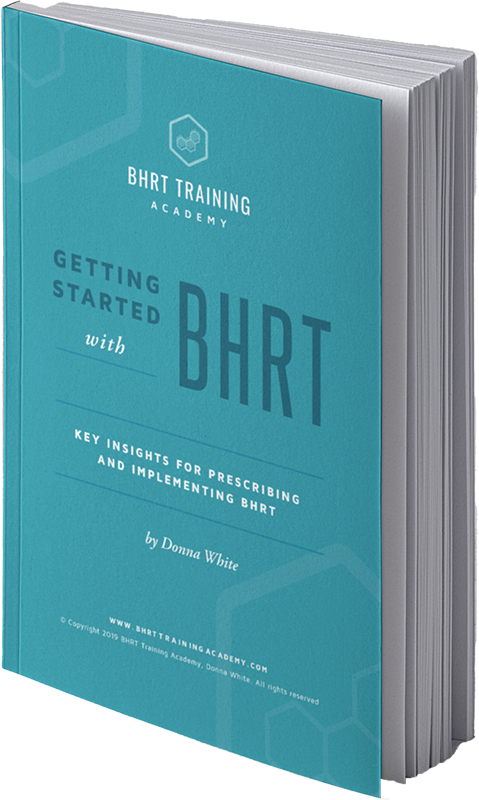Addressing and Treating Hormonal Imbalance in Women

Hormonal imbalance likely affects all of us—both men and women—at one time or another, especially as we age.
Our endocrine systems are so delicate that even small changes in hormone levels can lead to severe symptoms. They are also connected with a myriad of other health issues.
You can help your patients reduce physical symptoms and mood swings brought on by hormonal imbalance with bioidentical hormone replacement therapy (BHRT)—this treatment is considered by many experts to be safe and effective.
What causes hormonal imbalance in women?
Aging naturally brings at least some level of disruption and hormonal imbalance—for both men and women. Often, there is more than one cause at play, so addressing the entire issue involves multiple complementary treatments.
Diet, lifestyle, and co-occurring health issues should always be considered when considering causation and treatment.
There are many reasons why women’s hormones can be out of balance, including:
- Pregnancy
- Menopause
- Perimenopause
- PMS
- Thyroid problems
- Stress
- Birth control
- Reproductive health issues like PCOS
Plenty of other health problems can cause and result in hormonal imbalance, including eating disorders, Alzheimer’s disease, and serious illnesses such as cancer. Consistently imbalanced hormone levels can also trigger diseases like osteoporosis and heart disease, and the risk of this increases with age.
Practitioners should be willing to look outside the box and offer treatments that both they and their patients can feel good about.
Pellet therapy is one popular option and a simple way to help women looking for a low-maintenance type of hormone therapy—learn more about pellet therapy.
Signs and Symptoms of Hormonal Imbalance in Women
Do your patients know what is going on with their bodies?
Treatments such as BHRT offers comprehensive, individualized treatment, give women more opportunities to ask questions, discover key causes, and feel more empowered about managing symptoms like:
- Irregular periods
- Low sex drive
- Vaginal dryness
- Insomnia
- Fatigue
- Hot flashes
- Depression
- Memory problems
- Brain fog
- Digestion problems
- Mood swings
- Weight gain
- Infertility
- Thinning hair
- Brittle nails
- Muscle loss
- Changes in skin and hair texture
Allergies and infections can also be addressed as part of long-term therapy for hormonal imbalance.
Since the endocrine system and thyroid are so delicate, it can be very easy to develop hormonal imbalance, especially at certain times of life.
Since lifestyle factors can also exacerbate symptoms, addressing hormonal imbalance from a holistic standpoint is important.
Learning to prescribe hormone therapies like BHRT is a safe and effective way that offers patients many benefits.
Estrogen and Progesterone Therapy for Hormonal Imbalance
Progesterone deficiency is common during perimenopause and menopause when ovulation ceases or sputters. It can also result from oophorectomy, birth control pills, stress, thyroid problems, or nutrient deficiencies.
Although estrogen typically declines over time—and in some cases, it is a steady drop—estrogen levels can also fluctuate, especially through perimenopause.
Progesterone therapy can help to balance when there is a diagnosis of a deficiency, such as what occurs during menopause and even perimenopause.
Hormone testing should be comprehensive to determine how many of the hormones are free hormones and offer the most appropriate therapy. Testing should also occur regularly, especially if hormonal fluctuations are suspected to be the main cause of the symptoms.
Progesterone therapy can help offset estrogen dominance, especially if women are experiencing symptoms such as heavy flow, frequent periods of intense PMS.
Learn to Treat Hormonal Imbalance with BHRT
Estrogen and progesterone therapy can be safe and effective in helping women find relief from intense symptoms.
Wellness programs and plans which include lifestyle recommendations, natural treatments and hormone replacement therapy such as pellet therapy will give them a new lease on life.
A range of options for patients can help people manage the hormonal imbalance.
Health practitioners seeking alternative care models should learn how to administer BHRT.
This can offer patients symptom relief and improve their quality of life.
Are you ready to make a difference in their lives?
Consider adding BHRT to your list of services—schedule a free strategy call.
Enjoyed this article? Here are three more to help you:

Get the quick read ebook,
Getting Started with BHRT -
Key Insights to Prescribing and Implementing BHRT.
CME's - Earn while you learn.
